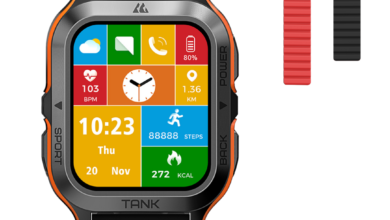Billing and Revenue Management Solutions for Utilities

Any business requires an efficient revenue management and billing system to avoid getting stuck in these processes, minimize manual work, and grow competitively. That’s precisely why BRM solutions are created.
Let’s start with the BRM definition. BRM is a comprehensive software solution designed to optimize and automate processes related to billing, revenue accounting, and management of other financial operations. Billing and revenue management does not bypass major market players (B2B) or retail utilities in the B2C format. Business-to-business and business-to-consumer models require billing based on subscriptions, contract billing, servicing various pricing models, further tracking of revenues, and performing additional financial operations. Each business approaches pricing differently, has diverse regular payments, a distinct number of invoices issued, and so on. Therefore, the main task of the BRM system is to offer utilities flexible, scalable, and adaptive solutions for managing financial operations, revenues, and billing to customers. This includes the ability to adjust and adapt to market dynamics and the company’s pace of development.
This is precisely the BRM system for Utilities that MaxBill offers. According to experts, MaxBill is among the top 3 successful billing and revenue management solutions. It offers a smart BSS solution that allows comprehensive management of business processes. The MaxBill ecosystem supports various business models and works with an unlimited number of offer packages and databases, and thus, for the company’s clients, there are no restrictions on scaling and further development.
What is Cloud-based billing and revenue management software for utilities?
Let’s take a closer look at how billing and revenue management is carried out using specialized cloud software, such as MaxBill. Cloud BRM software for utilities uses cloud technology to provide scalable, flexible, and cost-effective capabilities that meet utilities’ needs. Such cloud software for billing and revenue management automates the end-to-end billing process, from meter reading and consumption tracking to invoice creation and payment collection. Cloud solutions mean easy access for company employees to the required functions, which contributes to work efficiency, reduces operating costs, and improves the customer service experience for utility sector clients. Thus, the need for additional resources is reduced so that customers receive higher-quality service at each stage, and the company is not forced to raise tariffs to cover these costs.
Advantages of Utility BRM
Among the key options for utilities in the BRM system are:
- Integration with smart meters and Internet of Things devices for real-time data management, accurate billing, and revenue forecasting for utility companies.
- Customers are automatically billed according to the chosen pricing model for services, which can be multi-level, fixed prices, metered billing, or pay-as-you-go plans.
- Cloud solutions allow for statistics and analytics, thereby eliminating potential revenue accounting manipulations or billing errors. This makes cloud systems an ideal solution that meets the needs of modern consumers and the companies serving them.
- Payment processing is done through secure and reliable payment portals, allowing payments to be processed instantly as soon as the system receives them.
So, cloud solutions are convenient for the utility and its clients. They offer advantages tailored to the unique needs of companies in the utilities, energy, and telecommunications sectors. Specifically, in these areas, cloud solutions enable even complex and multi-stage processes. For example, Utility BRM solutions are suitable for automatic meter reading, billing, revenue collection, and consumer tariff plan management. SaaS cloud solutions ensure scalability without limitations, accompanied by flexibility and accessibility to data stored in the system at any time and from any device. Thus, utility services, heating companies, and energy providers can meet customer needs around the clock. Billing and invoicing are done automatically, eliminating unintentional errors and contributing to customer satisfaction.
Automation also ensures the accuracy of financial records, facilitates reporting, and ensures compliance with modern standards. Whether increasing the number of customers and services or changing the tariff formation system, utilities and municipal services do not have to spend more on operating infrastructure maintenance for billing and invoicing — the integrated SaaS BRM solution can be used under any conditions.
Billing and Revenue Management (BRM) Functions for Utilities
MaxBill is the prime example of how BRM software should function, simultaneously enhancing the convenience of managing accounts and finances within a company and customer loyalty. The MaxBill system enables everything necessary:
- Revenue and potential debt prediction. On еру one hand, it ensures systematic billing and facilitates SWIFT and SEPA payments directly within the system. On the other hand, it helps mitigate the risk of accumulating debt.
- Billing according to each consumer’s tariff plan. The software is suitable for automatically calculating consumption volumes and payment amounts.
- The self-service portal allows customers to view bills and payment history or engage with a chatbot for technical inquiries.
- Presentation of the company’s products, services, and tariffs.
- Collaboration with partners — an excellent solution for multi-brand enterprises managing various service sectors. Billing settlements are enhanced through the use of AI technologies.
- CRM system ensures quality interaction with customers throughout their lifecycle.
- Ordering MaxBill provides reliable service fulfillment process functions essential for companies providing gas, electricity, heating, water, EV CPO, and other services.
- Meter. Online meter reading and validation, along with automatic payment calculation based on this data, allow companies to save time and resources on checking each meter in every household regularly.
Thus, MaxBill’s functionality adapts to the needs of utility companies while ensuring undeniable convenience for consumers. The system ensures a transparent accounting process, accurate payment calculation, and quality interaction between the company and its users.
Billing
Billing is a key functionality of BRM systems. Billing and Product Management with MaxBill facilitates accurate payment calculation and payment processing according to the company’s tariff structure. In combination, the system operates on a Meter-to-Cash principle, allowing bills for utility services to be issued strictly based on the volume of consumed services and with precise adherence to the tariffing applicable to each consumer.
All of this is seamlessly integrated into the overall billing system, from selecting services and tariffs to automatic meter readings, invoicing, and even payment processing. Payment processing does not require third-party financial instruments or solutions from the enterprise or the user. Naturally, this increases customer satisfaction and loyalty, fueled by the system’s transparency, clarity, coherence, openness, and convenience.
Even with the use of multifunctional services, this process does not become more complex for accounting or understanding from the consumer’s perspective. Moreover, SaaS’s modularity and adaptability allow municipal enterprises to add new services that meet the demands of the time and additional consumer needs.
Revenue Management
Billing and revenue management are closely intertwined. Receiving payments from consumers should be as straightforward as billing. MaxBill’s software solution facilitates this process. Revenue management in a cloud-based system minimizes the risk of fraud, predicts potential consumer debt levels, and facilitates the allocation of funds among the components of a multi-tiered service proportionally to coefficients and tariffs. Although it may seem complex from the outside, and manually performing such operations would require the constant work of an entire team of specialists, the MaxBill system automates this process according to the unique needs of each utility company.
Revenue Management can be divided into several stages:
- Revenue forecasting is based on historical data (previous company statistics and reporting), the number of existing customers, their tariffs, and the average volume of services they consume. This helps the company predict potential revenue for certain periods and allocate these funds efficiently.
- Revenue assurance is another critical aspect, involving constant monitoring and analysis of payment data and comparing this information with current revenue forecasts. By identifying discrepancies, the system helps accumulate and address issues as they arise.
- Pricing optimization also affects the organization’s profitability, so MaxBill assists utility companies in developing dynamic pricing models, segmenting customers based on their willingness to pay, and adapting pricing plans and promotional campaigns to individual customer needs.
Thus, the software solution forecasts potential profitability, compares it with the actual situation, analyzes pricing, and suggests improvements in these schemes, allowing customers to remain satisfied and the company to retain its profit and competitiveness.
BRM Balance Management
In addition to the already mentioned benefits, billing and revenue management ensures precise tracking and managing customer balances throughout their lifecycle. A customer’s balance is the history of previous payments, expenditures, adjustments, and the history of the volume of services consumed, divided into billing periods. If a customer pays more than necessary, the surplus is retained in their account and deducted from the next payment. If a consumer has outstanding debt, how it accrued can also be viewed in their personal account. Therefore, customers can see what payments they have already made and what current balance they have. Meanwhile, service providers can perform various balance management actions, including adjustments, disputes, settlements, and write-offs.
- Customer balances accumulate in their account and are consolidated into a statement.
- Payments received from customers are applied to their account balance updating it accordingly.
- Each customer account can contain one or several balance groups, such as subscription fees, payment for actual service consumption, etc.
- In turn, the company can adjust service unavailability periods in this section in case of outstanding debt, reconcile accounts, etc.
- Automated payment processing using integrated solutions and real-time fund movement tracking occurs here.
Balance Management is a tool the company needs for effective and fair billing. For consumers, it facilitates monitoring this billing and easier payment processing.
Debt management and ML debt risk prediction
Ultimately, billing and revenue management solutions are necessary to prevent customers from accumulating debt with utility companies. Without financial inflows from consumers, companies cannot provide quality services, affecting debtors and those who pay on time and conscientiously. Therefore, the next step in billing and revenue management is risk analysis and working to reduce the company’s consumer debt level.
- Some customers fall into the risk group: those who frequently miss payments, accumulate debt on issued bills, or have done so in the past. Debt risk prediction models and machine learning can easily identify these risks.
- ML proactively identifies and offers solutions for customers in the risk group. The system can detect overdue bills, send additional reminders to consumers, warn about possible service restrictions, etc. MaxBill provides comprehensive solutions for debt management and recovery and offers tools for interacting with problematic clients (automatic reminder system, sending clients proposals on how to easily pay overdue bills, etc.).
- Utility companies can use the MaxBill system for personalized communication with consumers to deal with problematic and overdue bills. The system provides them with timely information about payment options and additional tariffs they can choose to manage payments more effectively.
- The debt prediction model in the utilities and energy sectors ensures healthier cash flows through accurate prediction of customer debt. By analyzing historical data and customer behavior models, predictive technologies can identify customers at risk and provide proactive intervention strategies to minimize financial losses. For example, if a customer has had overdue bills and fines in previous billing periods, the system records and analyzes them. As a result of such analysis, utility companies can immediately identify a group of potentially problematic clients, forecast potential losses, and act proactively before these losses become critical to the company’s functioning.
- Segmenting customers into groups based on their solvency level allows for addressing each segment separately. For problematic consumers, discussing payment options, when to make payments, and what other tariffs they can choose to handle payments is more effective. Loyal customers may have more bonuses and benefits.
MaxBill’s debt prediction model uses its 70 parameters to adapt to various business needs in the utilities sector. This flexibility allows utility companies to adjust debt management strategies, fine-tune predictive algorithms, and more efficiently address specific tasks to maximize efficiency and revenue protection.
Also Read: Why Diversifying Your Processes is Essential for Modern Business Success
Choose Utility Billing and Revenue Management Solutions from MaxBill
Municipal enterprises have only recently begun to transition more frequently to automated Billing and Revenue Management (BRM) systems, but the results are impressive. These companies have started operating with higher profitability, successfully competing in the market, reducing the percentage of loss-making branches, and customers are less likely to forget to pay their bills. All this has happened with the involvement of MaxBill.
The company offers its services in different verticals, and as the billing system here is configurable, it also works with multiple billing. Moreover, the AI ML-enhanced modules meet the needs and requirements of modern business in any sphere. Currently, MaxBill’s services are even more tailored to the needs of municipal enterprises. This is driven by the company’s mission to provide more technological capabilities to ensure that things like providing residential and business customers with electricity, water, gas, or telecommunications are done at the highest level. On the other hand, the configurability and multifunctionality of MaxBill’s software solutions allow municipal service providers to focus resources directly on providing quality services and worry less about operational activities. So, with MaxBill, everyone wins!



